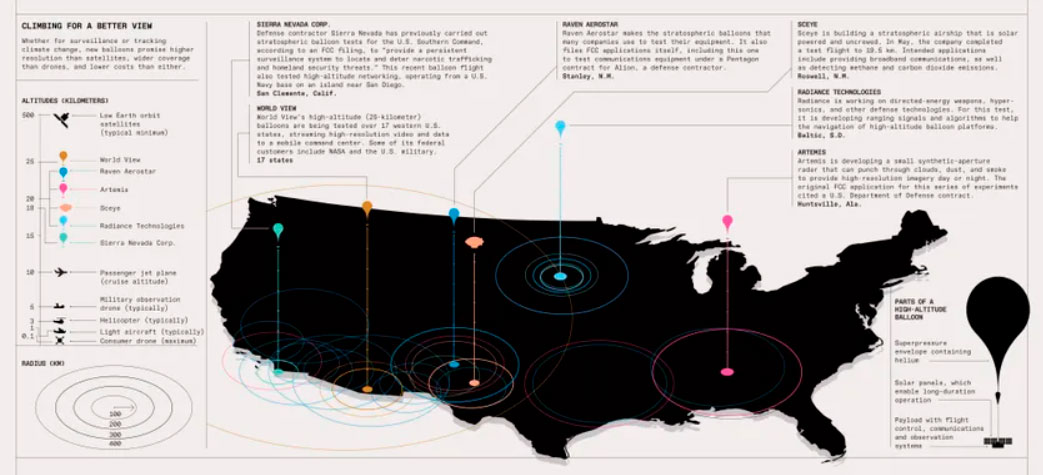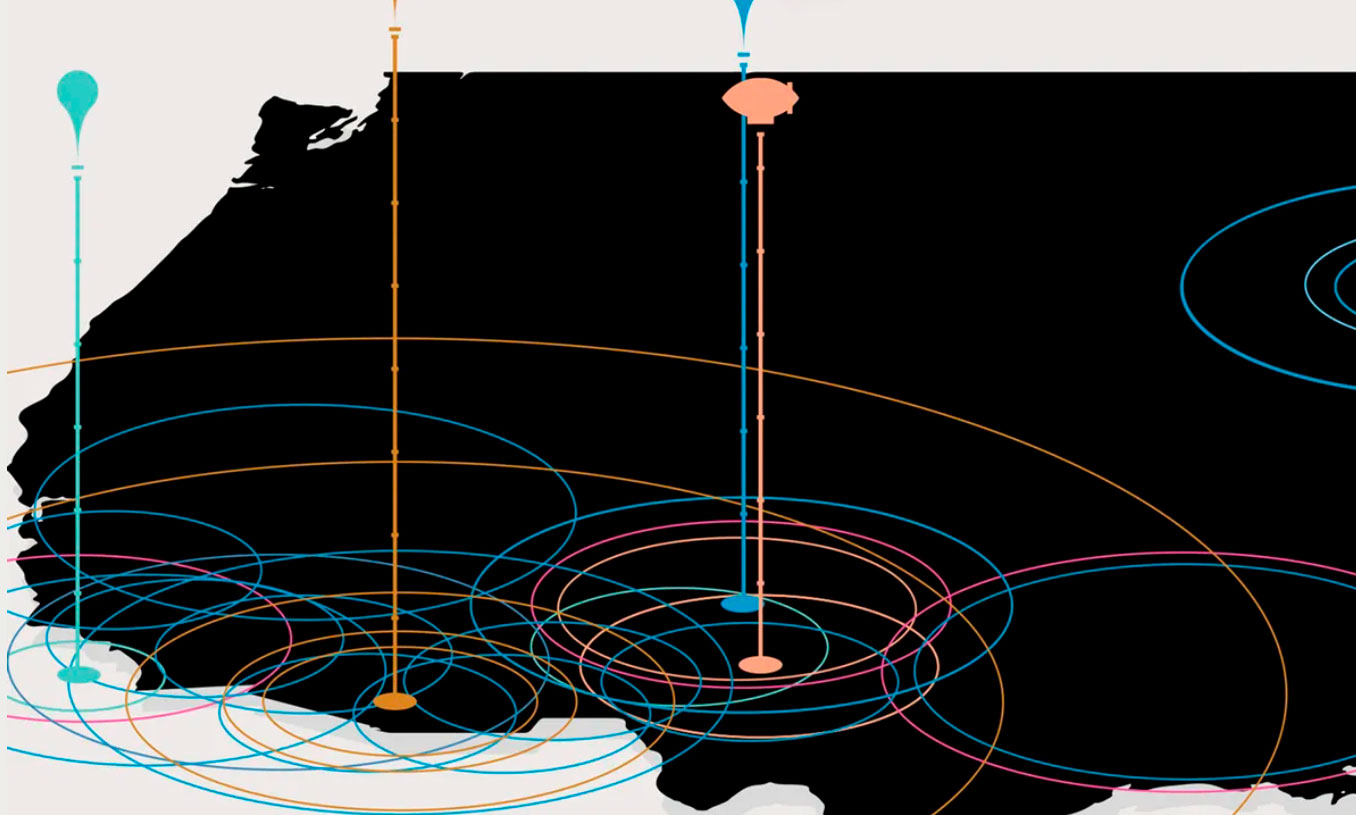El empleo de Globos, fue inicialmente probado en la Conquista del Espacio. Los globos trabajan en la estratosfera, a 20 Km sobre la superficie terrestre (10 Km por encima de las denominadas corrientes de chorro). Se encuentran suficientemente altos como para no molestar a los aviones, así como tan bajos como para observar detalles sobre la superficie de la Tierra. Tienen costos ínfimos respecto a un satélite de observación y cubriendo áreas si bien menores que un satélite, muy mayores a la que cubren los drones.
Alphabet’s enthusiasm for balloons deflated earlier this year, when it announced that its high-altitude Internet company, Loon, could not become commercially viable.
But while the stratosphere might not be a great place to put a cellphone tower, it could be the sweet spot for cameras, argue a host of high-tech startups.
The market for Earth-observation services from satellites is expected to top US $4 billion by 2025, as orbiting cameras, radars, and other devices monitor crops, assess infrastructure, and detect greenhouse gas emissions. Low-altitude observations from drones could be worth.
Neither platform is perfect. Satellites can cover huge swaths of the planet but remain expensive to develop, launch, and operate. Their cameras are also hundreds of kilometers from the things they are trying to see, and often moving at tens of thousands of kilometers per hour.
Drones, on the other hand, can take supersharp images, but only over a relatively small area. They also need careful human piloting to coexist with planes and helicopters.

Balloons in the stratosphere, 20 kilometers above Earth (and 10 km above most jets), split the difference. They are high enough not to bother other aircraft and yet low enough to observe broad areas in plenty of detail. For a fraction of the price of a satellite, an operator can launch a balloon that lasts for weeks (even months), carrying large, capable sensors.
Unsurprisingly, perhaps, the U.S. military has funded development in stratospheric balloon tests across six Midwest states to “provide a persistent surveillance system to locate and deter narcotic trafficking and homeland security threats.”
But the Pentagon is far from the only organization flying high. An IEEE Spectrum analysis of applications filed with the U.S. Federal Communications Commission reveals at least six companies conducting observation experiments in the stratosphere. Some are testing the communications, navigation, and flight infrastructure required for such balloons. Others are running trials for commercial, government, and military customers.
The illustration above depicts experimental test permits granted by the FCC from January 2020 to June 2021, together covering much of the continental United States. Some tests were for only a matter of hours; others spanned days or more.
Fuente: https://spectrum.ieee.org


